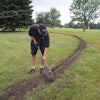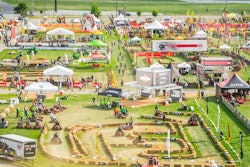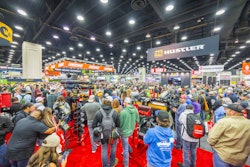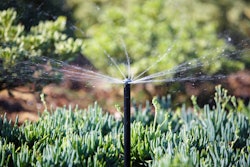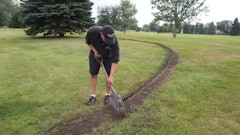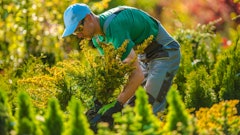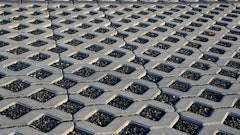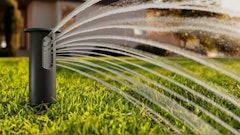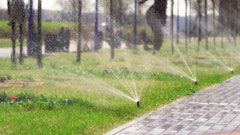
In many parts of the U.S., winter is coming.
And that means irrigation professionals need to be prepared to winterize their clients’ systems.
Costantino Cice, owner of C&C Sprinkler in Westbury, New York, and Nick Frantz, service manager at Carefree Lawn Sprinklers in New Lenox, Illinois, discuss why it’s so important, how to perform the process and how to overcome any obstacles that spring up along the way.
Why
If irrigation professionals service an area in which temperatures drop below 32 degrees F in the wintertime, they should winterize their clients’ systems—or risk the chance of the system freezing, breaking and costing major repairs come springtime, Cice says.
Frantz agrees that failing to winterize can be costly in time and money.
“If you don’t winterize, you can open yourself up for the potential of thousands of dollars worth of damage over the winter from anything that does happen to freeze on the system, whether it be the backflow mainline valves all the way out to your sprinkler heads themselves,” Frantz says.
When
Both Carefree Lawn Sprinklers and C&C Sprinkler begin to reach out to their customers about winterization in September, with the recommendation of getting the service scheduled before Thanksgiving.
“We have a lot of customers, so it’s always hard to squeeze everyone in at the same time,” Cice says. “However, there are always some people that forget, no matter how many times you call or send emails, so we’re still doing winterizing in December."
After several years with a system, customers become familiar with the winterization process and when the best time to call is, etc.
“We thoroughly explain the winterization process at the walkthrough of new installations and advise customers the ideal time to winterize, but still reach out via email and text message to let them know we are within the service window,” Frantz says.
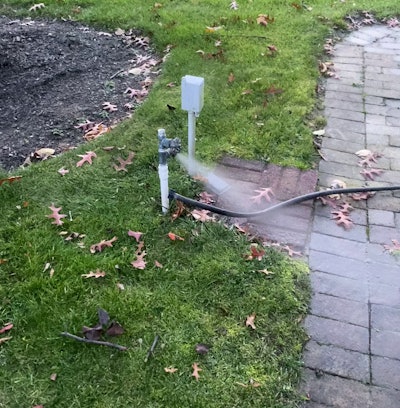 C&C Sprinkler
C&C Sprinkler
The process
When it comes to the winterization process itself, Cice says first and foremost crews need to be familiar with the process and capable of performing it.
From there, crews should perform the following steps:
- Turn off the water to the irrigation system.
- Ensure valves are not leaking.
- Account for add-on components that need to be winterized such as hose bibs and cabanas.
- Use an air compressor with compressed air to remove the RPZ backflow. Hook the compressor up and go zone by zone until all the water is evacuated from each zone.
- Insulate above-ground components.
- Any secondary ball valve should be left about 45 degrees so it won’t freeze and break.
- Turn off the controller and unplug if desired.
- All air compressors should be serviced and stored after the season has ended.
- On most systems (if the backflow prevention device is removable), it is removed and kept inside over the winter months to prevent any damage.
Depending on how many zones a system has, Frantz says the whole process can take anywhere from 20 minutes to one hour, assuming there are no obstacles.
To ensure crew members are performing winterizations properly, C&C Sprinkler trains new employees, supervising them until they prove they can do it.
“After so many years of getting feedback from the head guys, then they can start going out on their own,” Cice says.
For all crews, C&C Sprinkler makes notes in its system about additional items such as pools and cabanas and instances of when water does not come from the house. It also encourages crews to take videos of winterizing items so that it’s documented that they were addressed.
“Those are the little things that make it easy,” Cice says.
In some cases, obstacles may arise, such as the customer not being home for an appointment or service water still being turned on.
“If there’s unknown damage to the main line, the valves didn’t open or close or the customer isn’t home and accidentally left the water on, then you can’t winterize it,” Frantz says. “At that point, you just want to get as much of the system winterized as you can. Come springtime, you're probably going to have some repairs."
Advice
For other irrigation professionals looking to winterize systems, Cice recommends they perform the service at the right time with the right equipment.
“I see a lot of times contractors with small air compressors trying to do these big irrigation systems, and there's just not a lot of volume or enough volume and pressure behind them,” Cice says.
He also adds crews should double check that all the water is out, ensure that no zones were forgotten and try to document as much as possible.
“If you’re a small company and you're doing it yourself, it's one thing, but when you're a larger company and you're relying on your men to do this work, I just recommend taking videos, having the guys document and send it to you so at least you can check their work,” Cice says. “Obviously, we can't be at every site, but otherwise, I will lose sleep over making sure that my guys are doing a good job.”
Irrigation professionals should educate homeowners on their systems and explain the potential damages that can occur with not winterizing, even with “self-draining” systems that claim they do not need to be winterized. Those type of systems can run the risk of major damage if not drained properly or any water should end up trapped in any portion of the system.
“The average homeowner has a pancake compressor for tires or air tools, but tell them they shouldn’t go that route,” Frantz says. “Especially here in the Chicagoland area, we have harsh winters, and winterization is not something they’re going to want to skimp on.”


